Bees are fascinating creatures with an unusual characteristic — sticky hair. Join us as we uncover the secrets behind this curious adaptation and its significance in a bee’s life.
What Type of Hair Do Bees Have?
Bees possess specialized branched hair that facilitates the collection of pollen as they travel from one flower to the next. When a bee lands on a flower, these hairs grab any pollen they touch. Additionally, the minor electrical charge that builds up from flying helps to draw in pollen that may not come into direct contact with the hair. This charge allows the pollen to be pulled onto the bee’s branched hairs. This is what is referred to as “sticky hair.”
Why Do Bees Have Sticky Hair?
The bee has an abundance of hair covering its body, even its eyes and tongue. As they travel from flower to flower, some pollen grains stay on their hair. This makes them an important part of the local environment by helping to pollinate. Here are the many reasons that bees have sticky hair.
1. To Collect Pollen
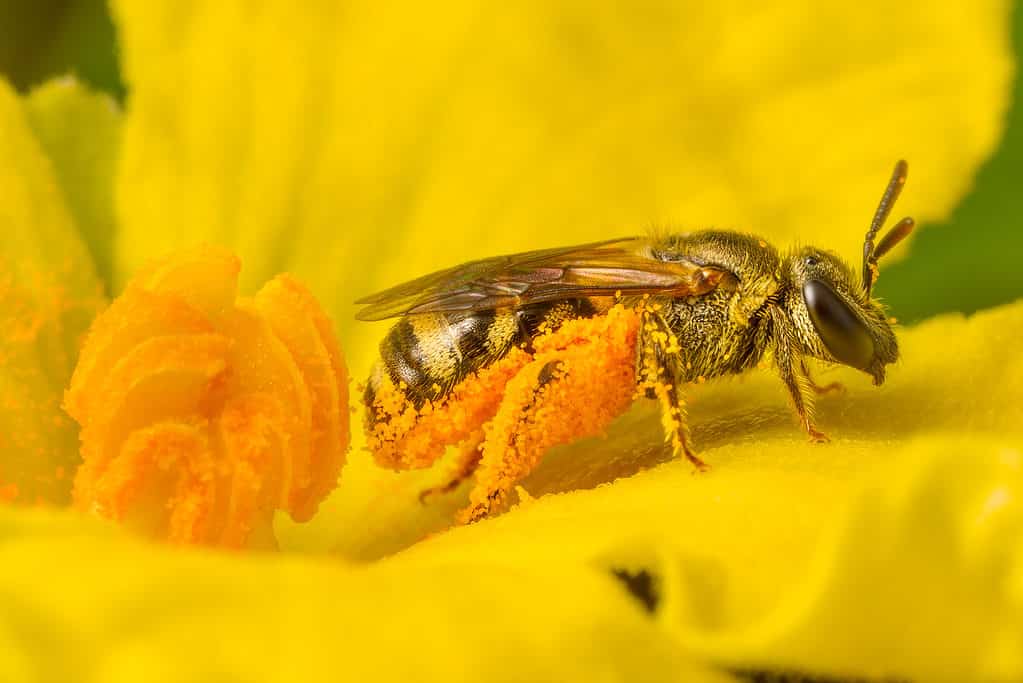
In the wild, bees live in sheltered forests and meadows.
©kajornyot wildlife photography/Shutterstock.com
Bees need to be hairy to effectively collect pollen from plants. The hairs on their bodies, including their legs and antennae, act as a trap for the tiny particles of pollen. As the bee moves around the flower, the hairs help to brush the pollen away from the flower and into the bee’s pollen basket, which is located on its hind legs. By brushing the pollen off, bees can carry larger quantities of pollen back to their hive. This helps to ensure a steady supply of food for their colony.
2. To Regulate Body Temperature
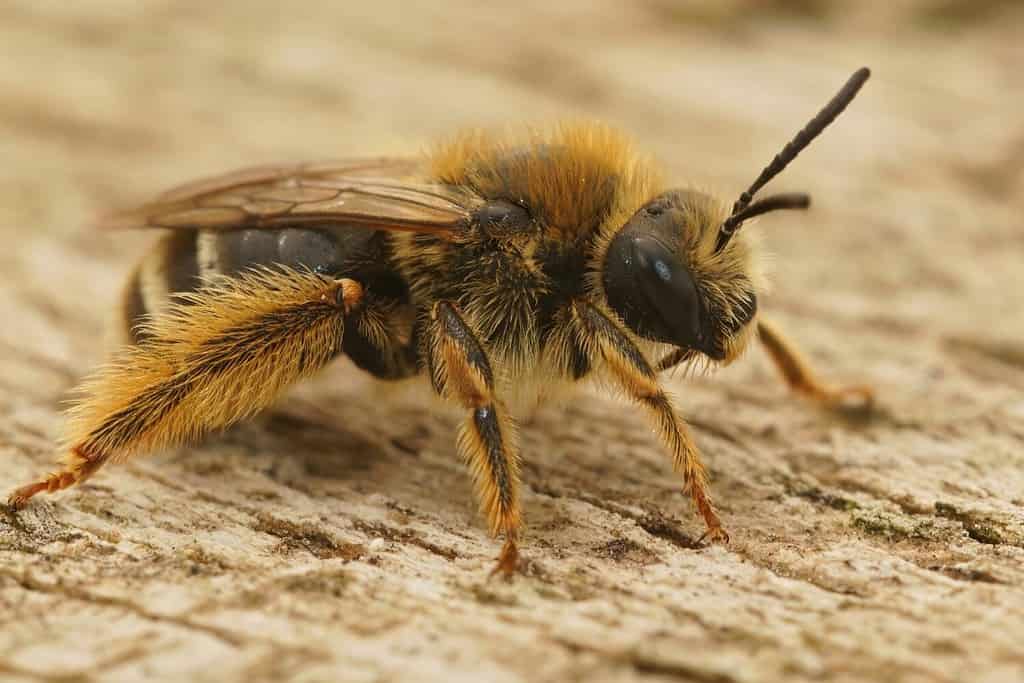
The sticky hair of bees helps them to stay warm and keeps them dry.
©HWall/Shutterstock.com
Bees have special physical adaptations that help them to regulate their body temperature. The main adaptation is their hair. The amount of hair on a bee varies from species to species. But in general, they are covered in a fluffy, downy coat. This hair helps to trap heat and keep the bee warm, even in cool conditions. It also helps to keep the bees dry, which further helps to regulate their temperature. Additionally, the hair on their wings helps to decrease surface area, reducing the amount of heat that is lost. As a result, the hair gives bees a great ability to regulate their body temperature. This allows bees to survive in a variety of temperatures around the world.
3. To Find Flowers
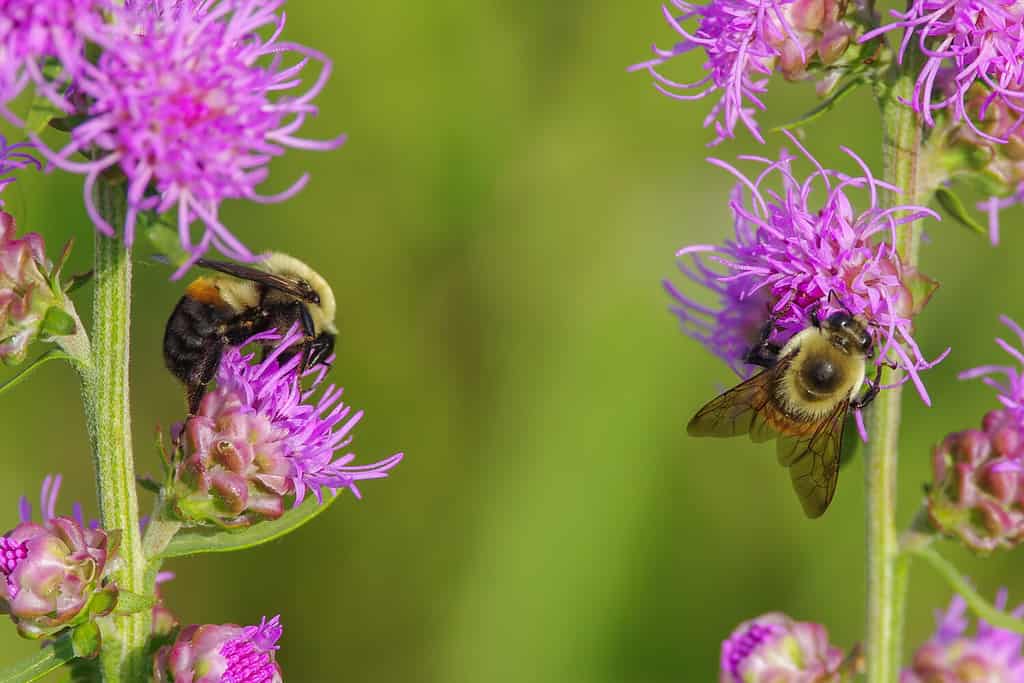
A bee can use its hair to detect the flow and currents of wind and to find nearby flowers.
©natmac stock/Shutterstock.com
Bees use their hair to detect wind currents and flow. This helps them search for pollen and alerts them to nearby flowers. The air movement created by the wind helps the bee orient itself, allowing it to identify the location of available flowers. Bees also use their hair to sense the direction and speed of the wind. This enables them to fly in the direction of the flower they need to pollinate. By using their hair to detect wind currents and flow, bees can quickly and efficiently locate flowers that have the pollen they need. This ensures they are able to pollinate quickly and efficiently. It also helps to keep the natural cycle of pollination and reproduction in motion.
4. To Detect Pheromones
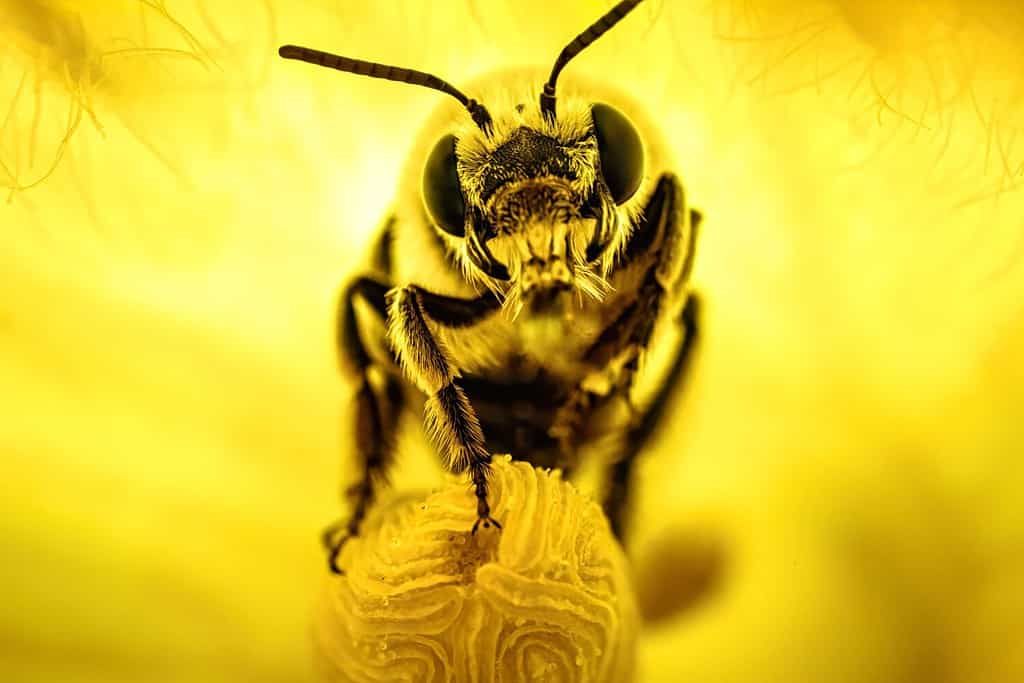
The chemical cues in their environment are important signals that bees detect with their sticky hair.
©Joseph Burdick/Shutterstock.com
Bees use their hair to detect chemical cues in the environment. These hairs are specifically adapted to pick up pheromones, which are chemical signals secreted by other bees to mark their territory. This is an important survival tool for bees, as it ensures that they know where their own territory is and will not accidentally wander into another bee’s area. By detecting these pheromones, bees can stay safe and maintain the boundaries of their territory.
5. To Sense Danger
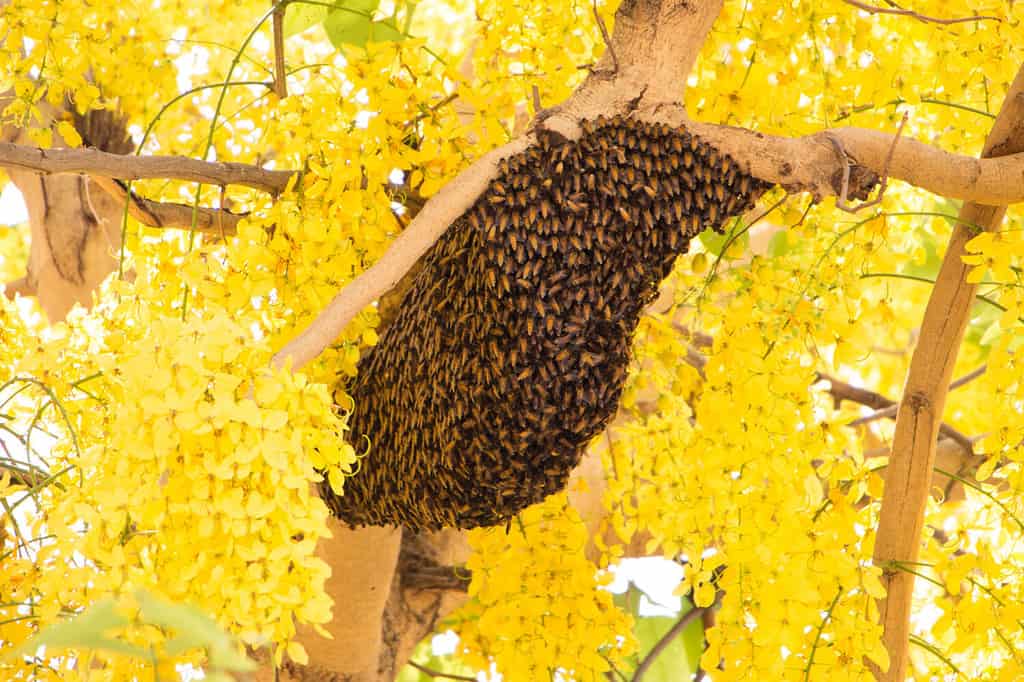
When bees sense danger, they will sometimes swarm away from their nest in large numbers.
©Infinity_Pok/Shutterstock.com
Bees have a unique way of sensing danger – their hair. These tiny hairs are located all over a bee’s body and help it to detect vibrations in the air. This allows the bee to sense any potential danger before it gets too close.
The hairs are incredibly sensitive and can pick up on even the slightest vibrations, alerting the bee to any potential threats. This early detection system helps it to prepare for a possible attack. It can then decide whether to flee or stay and fight.
Not only does this help the bee survive, but it also helps protect its hive. By sensing danger early, the bee can help protect the hive from potential threats.
6. To Touch and Feel
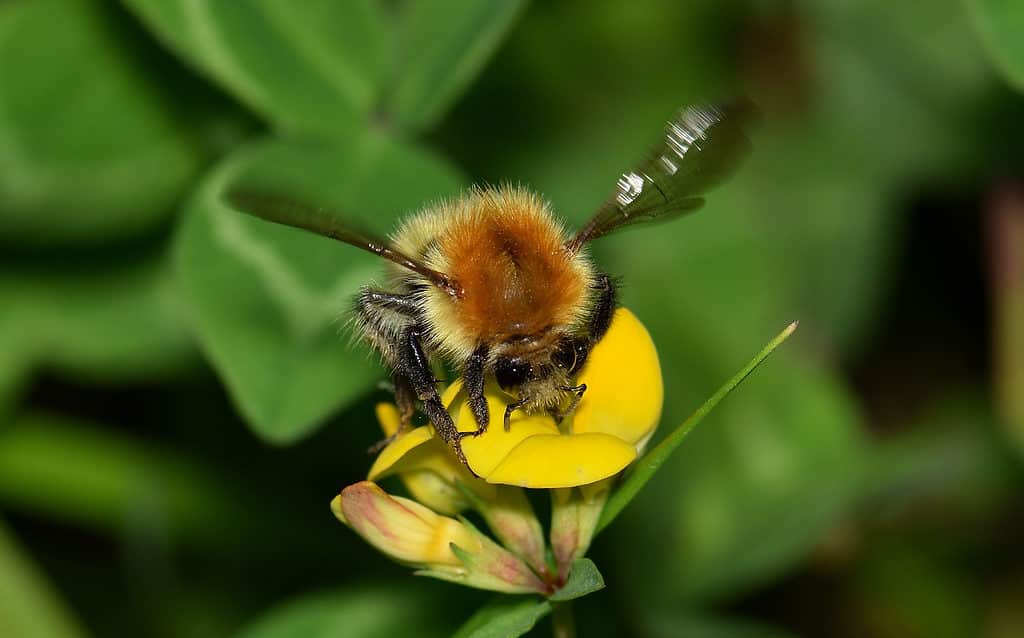
The sticky hair of bees helps them to feel and touch objects in their environment.
©iStock.com/Wirestock
Bees have a special kind of hair that helps them to touch and feel things. This hair helps them sense touch so they can be aware of what they are touching as they search for pollen. The hair on their bodies helps them to identify objects and surfaces, and they use this to help them find the food they need. As they collect pollen, they use the hair to sense the texture and size of the particles they are collecting. The hair also helps them to gauge the temperature of the objects they are touching, so they can decide whether it is safe to land or not. Thanks to their special hair, bees can explore and find food more easily.
7. To Keep the Hive Warm
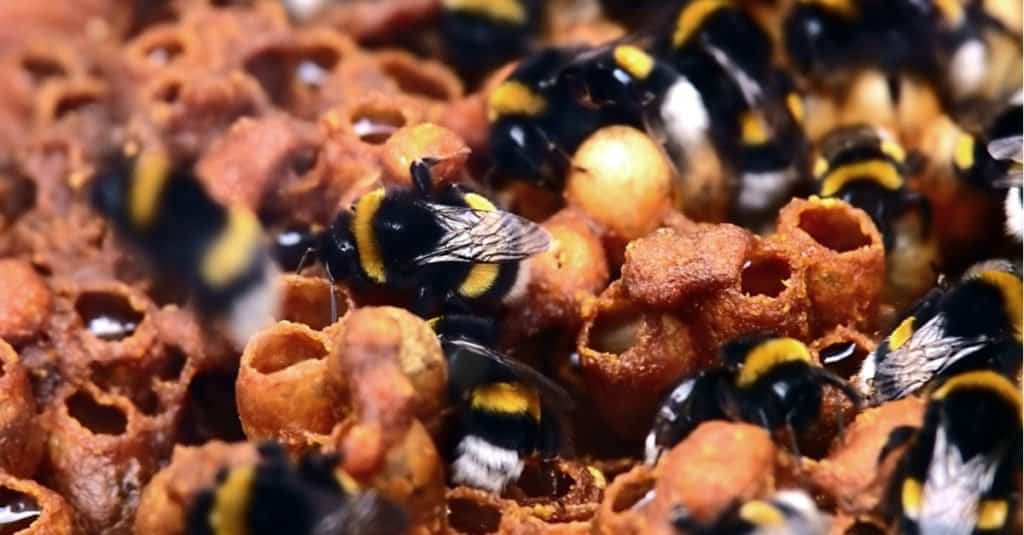
If bees get cold, they huddle together and use their dense hair to stay warm.
©dwphotos/Shutterstock.com
Bees have a unique way of keeping their hive warm: their hair! Bee hair helps to trap the heat, so when the temperature outside drops, the bees can huddle together inside their hive and stay warm. Additionally, the hair helps to keep the bees warm themselves, so they can still forage for food and help the hive survive in cold temperatures. All of these hairy bodies come together to create a layer of warmth and comfort that helps the entire hive stay safe and warm throughout the winter.
8. To Collect Oil
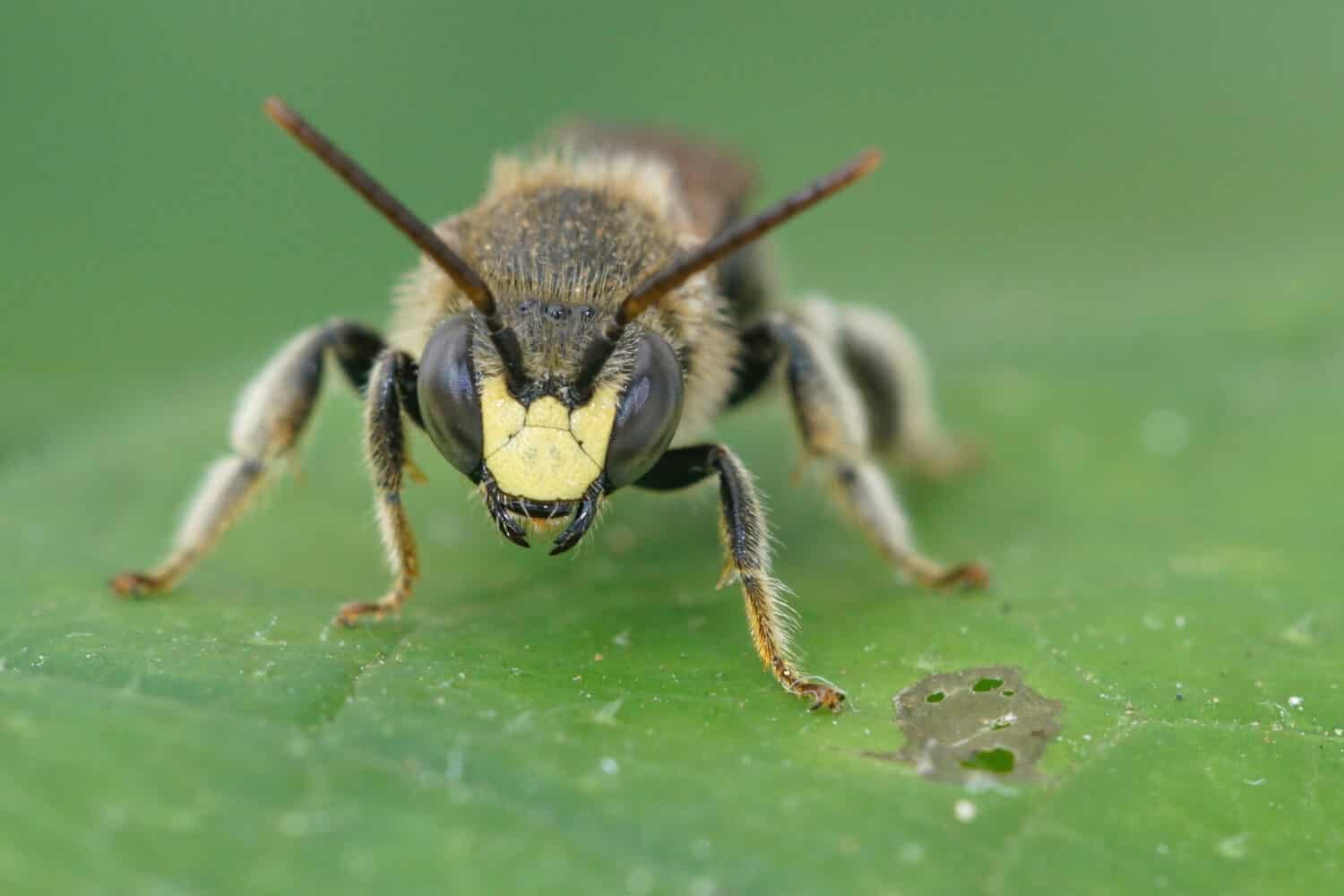
This Macropis bee uses its sticky hairs to collect oil.
©HWall/Shutterstock.com
Some bees have a unique way of collecting oil – they use specially adapted hairs on their front legs! Scientists have named these bees ‘oil-collecting bees.’ One type of oil-collecting bee is Macropis. They have a special spatula shape formed by the hairs, which are perfectly designed for the task. This unique adaptation helps them to collect oil from flowers, giving them access to valuable nutrients. This type of bee is an example of the incredible adaptations that animals can make in order to survive.
What Types of Bees Have the Most Hair?
Bumblebees have a much greater amount of hair than honey bees, giving them a distinct advantage when it comes to foraging during cold weather. Honeybees possess an impressive three million hairs, which are strategically placed to help them collect and transport pollen.
A research study of multiple bee species revealed that larger bees had longer hair, while the smaller bees had thicker hair. Out of the bees that were studied, bumble bees (Bombus) had the most hair, and among them, Bombus hortorum had the longest. The densest hair was found on a small bee called Lasioglossum morio, otherwise known as the common green furrow bee.
Are Bees The Only Species With Sticky Hair?
No, bees are not the only species with sticky hair. In fact, when it comes to the hairiness index, butterflies and moths surpass bees in terms of both the length and density of their hair. These delicate insects boast longer and denser hairs that aid them in various aspects of their lives.
Additionally, other insect species, such as hoverflies, beetles, and different types of flies, also possess sticky hair. This unique adaptation is not exclusive to bees but can be found across a diverse range of flying creatures in the insect world.
Wasps, known for their distinctive appearance and behavior, are another example of insects equipped with sticky hair. This feature helps them cling onto surfaces or capture prey more effectively.
Pollen beetles are yet another species that rely on sticky hair for survival and reproduction. The pollen they collect from flowers often sticks to their hairy bodies during pollination activities—a crucial process for plant fertilization.
Why Do Bees Have Hairy Tongues?
The presence of hairy tongues may initially appear peculiar, but it is actually a crucial adaptation for bees, assisting in creating a tube-shaped structure that enables them to extract nectar from floral sources.
Bees ingeniously use their tongue hairs to construct a microscopic conduit, like a straw, for drawing up nectar from delicate flower blossoms. This intricate network of filaments forms interlocking strands to create a flexible yet sturdy channel for efficiently transporting the life-sustaining elixir to the bee’s body.
The photo featured at the top of this post is © iStock.com/William Jones-Warner
Thank you for reading! Have some feedback for us? Contact the AZ Animals editorial team.







